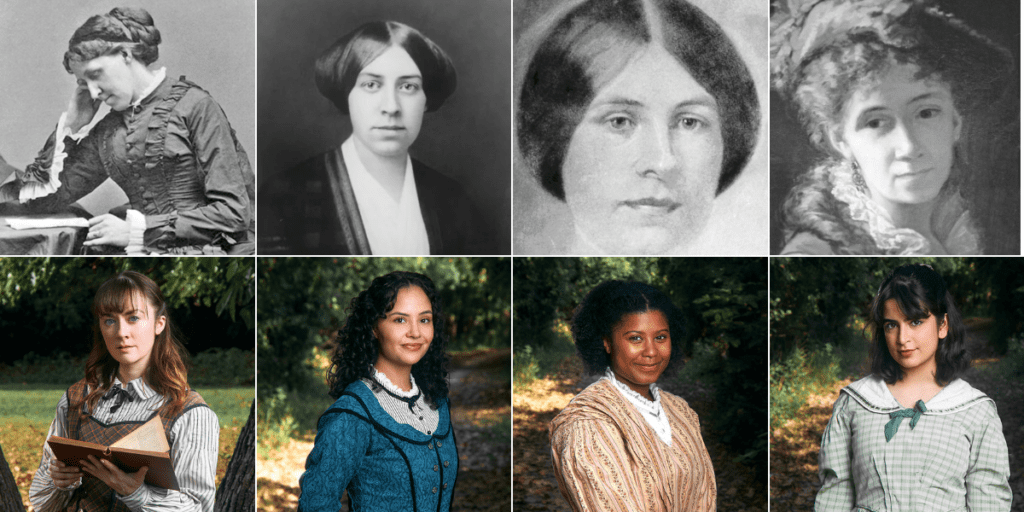by Helaina Michele Coggs
The Hart-Celler Act, officially known as the Immigration and Nationality Act of 1965, was a groundbreaking law that transformed U.S. immigration policy. It replaced the old system of quotas, which heavily favored certain European countries, with a new one focused on family reunification and skills. This change opened the door for immigrants from all parts of the world, making the United States a more diverse nation.
When President Lyndon B. Johnson signed the act into law at the foot of the Statue of Liberty, he described it as an unassuming piece of legislation. He remarked that the bill would not “reshape the structure of our daily lives.” Yet, in hindsight, it did exactly that—redefining America’s demographics, its cultural fabric, and its promise to the world. The Hart-Celler Act dismantled a deeply rooted system of racial exclusion and opened doors for millions of immigrants, fundamentally changing the country.
Before 1965, immigration policy was dominated by the National Origins Act of 1924, which imposed quotas based on national origins. These quotas heavily favored Northern and Western Europeans while restricting immigrants from other regions, such as Asia, Africa, and Latin America. This system reflected and perpetuated racial hierarchies, maintaining a vision of America as predominantly white and Western.
The 1960s were a decade of transformation. The civil rights movement challenged the nation’s conscience, demanding an end to segregation and discrimination. This fight for equality reverberated across various aspects of American life, including immigration policy. Leaders like Dr. Martin Luther King Jr. and civil rights activists understood that racial justice extended beyond Black and white relations. Immigration reform became part of this broader push for equality.
Senator Philip Hart of Michigan and Representative Emanuel Celler of New York, the architects of the 1965 act, envisioned an immigration policy that reflected these changing values. They sought to replace the discriminatory quota system with one that prioritized family reunification and skills. Visas would now be distributed based on an applicant’s family ties in the U.S. or their professional qualifications, not their country of origin. For many immigrants, this represented hope—a chance to contribute to a society that valued their potential rather than judged them by their birthplace.
The bill’s passage was not without controversy. Critics warned that the new policy would dramatically alter America’s demographic makeup and potentially lead to unmanageable immigration levels. Ironically, proponents of the act assured skeptics that it would not significantly change the country’s population dynamics. Yet, by removing barriers based on national origin, the Hart-Celler Act set in motion a wave of immigration from Asia, Latin America, Africa, and the Caribbean. Today, the descendants of these immigrants undoubtedly shape aspects of everyday American life—from politics and business to arts and culture.
The play The Heart Sellers captures the emotional realities of this era of immigration. The characters Jane and Luna are fictional, but their experiences resonate with countless immigrants who navigated the complexities of identity, belonging, and cultural adjustment. Their conversations over a frozen turkey reveal the nuanced ways the Hart-Celler Act transformed lives beyond just facilitating entry into the U.S.
The act was more than a policy change; it was a promise. It signaled a shift toward a more inclusive America, where opportunity wasn’t dictated by the color of one’s skin or the geography of one’s birth. But it also exposed the challenges that came with this promise. Immigrants faced language barriers, economic struggles, and the sting of racism. They had to reconcile their cultural heritage with the demands of assimilation.
Many families’ stories reflect these tensions. Skilled professionals often found work that matched their abilities but faced moments of alienation. Others, tasked with raising children in an unfamiliar culture, spoke of feeling like they were straddling two worlds. These communities found solace in shared experiences, where stories, recipes, and strategies for survival became vital connections.
The bond depicted in The Heart Sellers serves as a testament to the power of connection—how shared experiences can help navigate uncharted territory. Immigrant communities often mirrored this solidarity, coming together to find strength and belonging in a new land.
The Hart-Celler Act was not without its flaws. Its emphasis on family reunification inadvertently created backlogs and delays that persist in the immigration system today. Critics argue that its focus on skills-based immigration has sometimes privileged certain professions over others, reinforcing inequalities. And while it dismantled explicit racial quotas, the act didn’t eradicate systemic racism in immigration enforcement and policy.
Yet, its legacy endures. The Hart-Celler Act paved the way for an America that looks more like the world. It reshaped neighborhoods, schools, and workplaces, making diversity not just an ideal but a reality. For many families, it was a lifeline—a chance to dream, to build, and to belong.
The Hart-Celler Act is more than just a chapter in immigration history; it’s a thread in the fabric of countless family stories. It serves as a reminder of the transformative power of policy—and the enduring strength of those who dare to seek a better life. For all its complexities and contradictions, it remains a symbol of what America aspires to be: a land of opportunity, a haven for the hopeful, and a home for the heart sellers.



